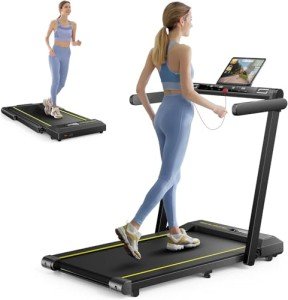The Benefits and Features of a Manual Treadmill for Walking
In a world where technology continues to lead the way for convenience, the manual treadmill stands as a testament to simplicity, efficiency, and effectiveness in physical fitness. While numerous may depend on motorized treadmills for their exercise routines, manual treadmills use special benefits that can cater specifically to walking enthusiasts. This post will dig into the features of manual treadmills, their many benefits, and a comparative analysis of some popular designs.
What is a Manual Treadmill?
A manual treadmill is a fitness device that requires the user to produce their own forward motion by walking or running. Unlike motorized treadmills, which have an electric motor that moves the belt, manual treadmills operate entirely on human power. This vital difference makes manual treadmills an intriguing option for those seeking to enhance their physical fitness levels while conserving on energy and expense.
Advantages of Using a Manual Treadmill
There are a number of benefits to selecting a manual treadmill for walking. Below are some key benefits:
- Cost-Effective: Manual treadmills are normally less costly than their motorized equivalents. This affordability makes them an appealing alternative for budget-conscious people looking for an efficient workout service.
- Simplicity and Durability: Without intricate electronics, manual treadmills are usually easier to preserve and frequently last longer. They can withstand the rigors of regular usage without the wear and tear frequently seen in motorized versions.
- Much Better Engagement of Muscles: The act of propelling the treadmill belt with one's own legs engages more muscle groups, particularly the glutes and hamstrings. This can lead to a more efficient workout.
- No Electricity Required: For those concerned about their carbon footprint or wanting to minimize electricity costs, manual treadmills provide a perfect option.
- Versatility: Many manual treadmills featured adjustable incline levels. This function permits users to simulate outside walking conditions, which can intensify the workout.
- Compact Design: Typically, manual treadmills are lighter and more compact than motorized designs, making them easy to save in small areas.
Table 1: Key Features of Manual Treadmills
| Feature | Manual Treadmills | Motorized Treadmills |
|---|---|---|
| Source of power | Human-powered | Electric motor |
| Expense | Lower | Higher |
| Maintenance | Easier, less parts | More intricate, may need servicing |
| Muscle Engagement | High (more muscle groups activated) | Moderate (treadmill propels user) |
| Size | Usually compact | Varies, typically bulkier |
| Incline Options | Typically adjustable | Automatic incline adjustments |
Popular Manual Treadmill Models
When thinking about a manual treadmill for walking, numerous models are available on the marketplace. Below is a list of some of the most popular choices, along with their crucial functions:
Table 2: Comparison of Popular Manual Treadmill Models
| Design Name | Weight Capacity | Incline Settings | Console Features | Price Range |
|---|---|---|---|---|
| ProForm Performance 600i | 300 pounds | 2 levels | Time, Distance, Calorie Burn | ₤ 299 - ₤ 499 |
| Fitness Reality TR3000 | 400 pounds | 3 levels | LCD display, Heart Rate Monitor | ₤ 199 - ₤ 299 |
| Sunny Health & & Fitness | 220 pounds | None | Digital Monitor, Foldable | ₤ 150 - ₤ 250 |
| Stamina InMotion II | 250 pounds | Adjustable | Track Time, Distance | ₤ 119 - ₤ 199 |
Tips for an Effective Manual Treadmill Workout
- Warm-up!: Always start with a warm-up to prepare your joints and muscles.
- Correct Form: Maintain an upright posture with your shoulders back and relaxed.
- Focus on Your Pace: Manual treadmills allow you to determine your speed. Start sluggish and gradually increase your speed.
- Add Incline: If your manual treadmill has incline settings, incorporate them for a more difficult exercise.
- Cool off: After your exercise, take some time to cool off to assist recovery and prevent muscle soreness.
Often Asked Questions (FAQs)
Q1: Is a manual treadmill appropriate for beginners? see page : Yes, manual treadmills are an excellent option for beginners. Users can manage their own speed and intensity, making them approachable for all fitness levels. Q2: Can I integrate a manual treadmill workout
with strength training?A: Absolutely! You can alternate between walking sessions on the treadmill and bodyweight workouts, like squats or lunges, for a well-rounded fitness routine. Q3: How does a manual treadmill compare to outdoor walking?A: While outside walking offers fresh air
and varied terrain, a manual treadmill enables a regulated environment with adjustable slopes, making it versatile for different exercise intensities. Q4: Are manual treadmills hard on the knees?A: Manual treadmills can be gentler on the knees, as they promote a natural walking movement.
Nevertheless, it's important to keep great kind and listen to your body. Q5: How much area do I need for a manual treadmill?A: Manual treadmills are usually compact and need less area than motorized treadmills, making them appropriate for tight living quarters.
A manual treadmill offers an unique mix of cost-effectiveness, resilience, and muscle engagement that can substantially boost one's fitness routine. While technology-driven options might dominate the marketplace, manual
treadmills offer a refreshing alternative that caters to those who value simplicity and practicality in their workout regimens. By assessing your particular physical fitness needs and thinking about designs that suit your way of life, you can embark on a much healthier journey with the trusty manual treadmill. By purchasing a manual treadmill, people not only commit to enhancing their physical wellbeing but also make a sustainable option for their long-lasting physical fitness objectives.

